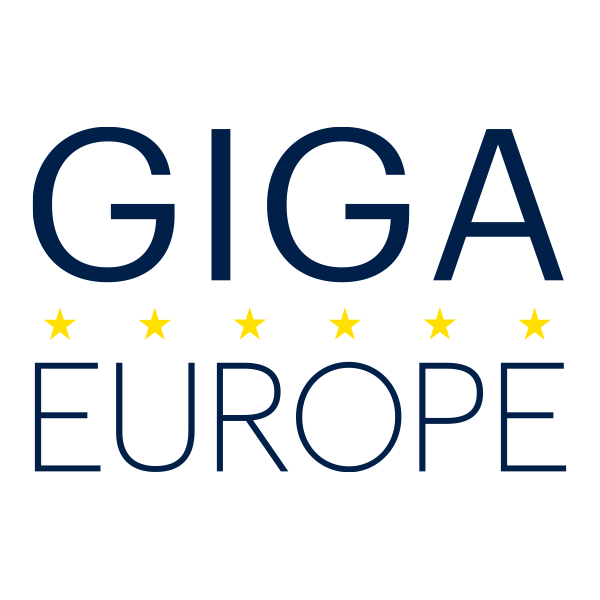Do We Have All the Right Networks for the Future?
by GIGAEurope
Brussels – 11 June 2024
Let us examine our networks for a moment. We, of course, have digital networks to facilitate important daily tasks. Collectively, we also rely on the networks we assemble ourselves. These social structures are a source of education, human development, and professional advancement. They help modern societies function, as people leverage tools and services that run on digital network infrastructure.
The European Commission’s recent White Paper on connectivity outlines key barriers to “mastering Europe’s digital network infrastructure needs.” During the GIGAEurope event in April, Finding a Framework for the Future: Making Telecommunications a Strategic Industry, Kamila Kloc (Director of Digital Decade & Connectivity in Directorate B, DG CONNECT, European Commission) described the White Paper as “paving the way for a more deregulated approach with less burdensome remedies imposed on operators…” With this end in mind, she noted “One of the scenarios we are testing with stakeholders consists of recommending fewer markets or even no markets at the EU level while ensuring that relevant pro-competition safeguards are in place.”
Industry welcomes this collaborative approach. As Ann Caluwaerts (Chief Corporate Development Officer, Telenet and Non-Executive Board member Imec & Bpost) remarked during the same fireside panel discussion, “We need to take a fresh look at the connectivity sector, as companies undergo structural changes in their business models. Companies like Telenet separating the network business from the services business represents a trend across the industry. Deregulation of sector-specific legislation and a switch from ex-ante to ex-post controls are essential to accommodate new market dynamics and competition realities.”
Policy frameworks that will help European countries and companies surmount the most pressing challenges must include:
protection for market-based competition among all Gigabit-capable technologies
harmonised legislation that leads to a true EU Digital Single Market
deregulation and a shift from ex-ante to ex-post controls
holistic approach to competition and in-country consolidation.
Industry is doing its part to provide the best connectivity service possible and roll it out to everyone – everywhere. Still, there is a strong correlation between user adoption and deployment of digital network infrastructure. Furthermore, using digital technologies safely requires tackling the low level of digital skills across Europe.
Recent European Commission data suggest that Member States are below the Commission’s Digital Decade targets. A Deloitte Insights report, Now decides next. Is Europe ready for generative AI? highlights the skills gap in the EU and UK, stating that over 33% of the labour force lacks necessary digital skills.
Improving these statistics requires the deployment of digital networks to be paired with educational and human development networks, upskilling and reskilling opportunities for those currently in the labour market, and digital literacy initiatives that incentivise user uptake of emerging digital technologies. Digital skills also empower people to have more control over their own professional development and access a wealth of lifelong learning resources. The EU must attract talent, cultivate specialists, and retain these pools in Europe.
Many companies are working to serve their customers in this way, as Caluwaerts stated “With so many digital transformations underway, every company is becoming an IT company. Every company is developing digital customer journeys. Companies need to take the accountability for ensuring their customers have the digital skills to interact with them.” Industry’s vision for our modern socioeconomic ecosystem is to offer developers the best internet service to build, test, and bring their innovations to an active market.
With a pool of ICT specialists and more women pursuing roles in the sector, professional networks that offer mentoring and coaching will ensure that they thrive here in Europe.
Historically, women and girls have been underrepresented in the sector. In recent years, professional practitioners and instructors have reported a shift. How can companies retain this increasingly diverse cohort of new talent? Moreover, how can companies avoid a glass cliff, where women are absent at the executive level – or even among senior management? Is there a way to foster a productive professional environment, where all employees can thrive?
Role modelling, mentorship, and coaching emerged as effective components when speaking with senior industry professionals. It may seem simple, but underrepresented groups in the industry laud the power of these resources. During GIGAEurope’s spring gathering, Eke Vermeer (Vice President, Public Affairs, Liberty Global) shared the insight that “Role models are very important, in terms of increasing the number of women in the ICT sector. Women and girls must be able to see themselves in these roles. Women also need to feel that they can be themselves.”
Mentorship programs offer guidance, support, access to information, and networking opportunities. These tools help women navigate the complexities of professional environments at the highest levels. For some, networks that build a sense of community can be the pull factor that attracts and entices high-performing talent to remain – while sharing expertise with peers and junior colleagues. McKinsey reports in Diversity matters even more: The case for holistic impact, that “companies in the top quartile for board-gender diversity are 27% more likely to outperform financially than those in the bottom quartile.”
The connectivity community commends the European Commission’s work to modernise EU connectivity policies and ensure that digital regulations catch up to advances in digital applications. Lawmakers, civil society, and industry must use all tools and assets available. The EU Single Market is a great achievement. Now we need a true Digital Single Market. Within this economic community, policies that crowd in private investment in connectivity infrastructure are essential. The sector also needs more opportunities to scale up and compete in a global digital economy. To achieve this, in-country consolidation and a revised approach to spectrum licensing are vital.
Most importantly, people are at the centre. We must strengthen the educational and professional networks that form healthy socioeconomic ecosystems.
RELATED ARTICLES

Be Courageous, Confident, & Curious: Insights for Women in ICT

On the Digital Highway – Destination: a Competitive Europe

EU Connectivity Needs Fast Rollout – Policies Must Aid Objectives

Interconnecting the Connectivity Talks

The EU made the case for digital – now skills must follow

Precision Agriculture: Leveraging digital tools to respond to a dual imperative

Enabling the Enablers: A Path to Europe’s Green Transition

How to ensure no European is left behind?

How connectivity can help bridge the digital trust gap

Capturing Europe’s Connectivity Momentum

